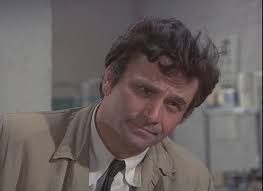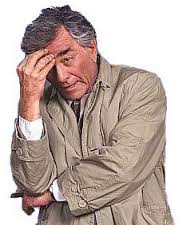We’re going to countdown my top ten favorite Big Finish stories of 2020. Big Finish is a British producer of audio dramas, best known for producing licensed Doctor Who Audio Dramas in spin-offs but have also have licensed several other series as well as doing their own originals.
In 2020, Big Finish not only released their expected releases but also was able to take advantage of the lockdowns to produce more audio dramas.
As usual with this list, while I listen to a lot of Big Finish, I can’t claim to have heard it all, and there are many ranges such as Torchwood, Class, Dark Shadows, Blake 7, Adam Adamant Lives, and Time Slip that I don’t really listen to. In addition, I have not heard every single release they’ve done this year even in the ranges I am interested in. That said, I’ve heard quite a bit and these are my favorites of what I have listened to. ‘
We’re going to have a lot of Doctor Who stories. So this article is going to assume basic knowledge of the series and how it works with the Doctor being an alien who travels in time and space in his ship, the TARDIS and when he dies, he regenerates into a new body (and is played by a different actor, with the latest being an actress. Each is numbered chronologically.)
10) Out of Time 1 by Matt Fitton
This is one of Big Finish’s lockdown productions and features the meeting between the most popular Doctor from the series’ original 26-year run and the most popular Doctor of the revived series. The Fourth Doctor (Tom Baker) and The Tenth Doctor (David Tennant) end up meeting by accident at a sci fi cathedral and have to team up to defeat their archfoe, the Daleks.
This story is a lot of fun with great interactions between the Doctors, as well as a few clever ideas, and at least one interesting side character.
The release is a perfect introduction to the type of audios that Big Finish makes today and is affordably priced for those who are curious about Doctor Who audio dramas. The story itself is a well-done but basic story of the Daleks invading to get what they want and killing anyone that stands in their way. But the moments between Tennant and Baker make this a fun release.
9) Scorched Earth by Chris Chapman
The Sixth Doctor (Colin Baker) and his companions Flip (Lisa Greenwood) and Constance (Miranda Raison) arrive in a French village right after it’s been liberated from the Nazis. They find a festive atmosphere but its marred when an angry mob shaves the head of a young woman they label as a collaborator and the Doctor suspects that a monster made of fire may be inserting itself into the war.
The story really brings about a genuine conflict among the TARDIS crew that’s quite reasonable. This isn’t immature bickering but disagreements that come out of who the characters are. Flip is a Twenty-First Century woman and Constance is from Wartime Britain having served as a WREN.
The difference is about something that matters as Constance thought the punishment of the young woman was justified. Flip didn’t, and the Doctor is trying to walk a fine line to keep his companions safe and avoid alienating either. Constance does grow through the story. My only complaint about the conflict is that Flip never understands Constance’s point of view. Constance is of course wrong, but being able to understand where someone’s coming from even when we disagree is important.
The monster works pretty well and compliments the themes of the story. There’s some solid soundscapes and the story does a great job making it easy to imagine the scope and power of this creature. There’s also just the right amount of humor, and some really fun action in the fourth episode that makes this a worthwhile listen.
8) Vanity Trap by Stuart Manning
(from the Sixth Doctor and Peri Volume 1):
The Sixth Doctor (Colin Baker) and Peri meet up with an aging Hollywood star who claims to have met them, and so the Doctor travels back to 1972 and a film that was never finished.
This is a piece helped by a superb cast, including Stephen Critchlow. I enjoyed Sarah Douglas’ performance as the aging starlet, who is played as a very complex character who is better than her obvious faults.
The Doctor and Peri are given great material to work with, including good tension between them that is believable and avoids going over the top. I liked how Colin Baker was given a change to establish the menace of the situation, as Sylvester McCoy often does, but in a way that fits his Doctor.
The sound design and music are superb, knowing when to use a light touch, and when to add subtle touches to ratchet up the tension.
Overall, this was an engaging story that’s underrated.
7) Ghost Station by Steve Lyons
(From the Anthology Time Apart):
Ghost Station finds the Fifth Doctor (Peter Davison) in an underground station beneath the Berlin Wall in the 1970s confronting an East German soldier with a body on the ground. The set up for the story is great, with superb atmosphere and effects. This story is a rare two-hander that allows the Fifth Doctor and the guard to play off each other for the entire runtime. Both Peter Davison and Timothy Blore turn in magnificent performances and play beautifully off one another. There’s just the right amount of plot and the story has some superb emotional beats. Overall, this is one of the best one-part Stories Big Finish has done.
6) Quest of the Engineer by Andrew Smith
For this year, the ninth series of Fourth Doctor Adventures, Big Finish reunited the Season 18 Tardis Crew of the Fourth Doctor (Tom Baker), Romana (Lalla Ward), Adric (Matthew Waterhouse), and K-9 (John Leeson) and told four additional stories set in Adric’s home dimension in E-space.
In the “Quest of the Engineer,” E-Space creator Andrew Smith returns to write the final script. Smith offers a massive concept that begins with the TARDIS crew arriving on a planet that forbids technology and encounters a remarkable man who gives them information that leads to a planet-sized ship that’s the domain of the engineer.
This is a superb story. The concepts are all great, imaginative sci fi ideas that are quite mind-blowing. The Engineer is one of the stronger villains Big Finish has created. He boasts a combination of arrogance, hubris, and cruelty as well as genuine genius that makes him a force to be reckoned with. Except for K-9, all the regulars are given a chance to shine.
The Engineer’s backstory is more complicated than necessary. Through the course of the episode, its revealed that the Engineer had been a ruthless war criminal. Smith tries to add an extra layer to that, a more personal angle, but it’s a bit hard to buy. Overall, still a very fun listen and the best Fourth Doctor story of the year.
To be continued next week…



